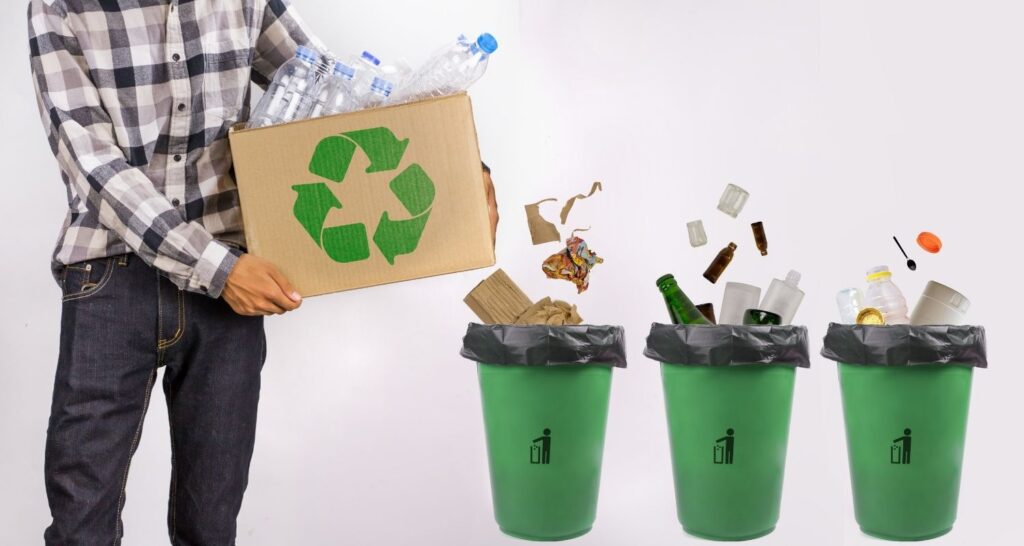What Is Solid Waste?
“Solid waste” can be described as worthless and undesirable products in their solid condition that results from society’s operations and is discarded. It’s formed as a by-product of manufacturing operations, or when things and materials are discarded in residential or commercial sectors.
The following words are often used when referring to solid waste:
- Garbage: a phrase that refers mostly to food waste but may also refer to other biodegradable organic wastes
- Rubbish includes combustible and noncombustible solid trash, but not food waste
- Refuse: is an umbrella word for solid waste which includes trash and junk
- Litter: is miscellaneous pieces of paper, abandoned wrappings, bottles, etc. left strewn around in public spaces
Types of Solid Waste
- Municipal Solid Waste
Household garbage, building and demolition debris, sanitation residue and street waste constitute municipal solid waste. Residential and business complexes mostly create this waste. With growing urbanization and changes in lifestyle and eating habits, the volume and mix of municipal solid garbage have both been changing fast.
- Hazardous Waste
Hazardous waste is industrial and hospital waste which may include dangerous compounds. Hazardous wastes may be very hazardous to people, animals, and plants; they may be caustic, highly combustible or explosive; and they may react with specific substances, such as gasses. Additionally, some forms of household trash are hazardous.
- Hospital Waste
Hospital waste is created due to diagnosing, treating, or immunizing humans or animals, doing research in these domains, or manufacturing and testing biologicals. These include syringes, swabs, bandages, bodily fluids and human excreta. This category specifically may contain sharps, dirty waste, disposables, anatomical waste, cultures, abandoned medications and chemical waste.
What Is Solid Waste Handling?
Solid waste handling encompasses the management, storage, collection, transportation, treatment, utilization, processing and final disposal of solid wastes – as well as the recovery and recycling of materials from solid wastes, or the conversion of energy contained in solid wastes to more useful forms (or combinations thereof).
Solid waste handling encompasses planning, administration, finance, engineering and law. In addition to public health, solutions may include inter-disciplinary collaborations in urban and regional planning and demography.
There are distinct differences in solid waste handling techniques between rich and poor countries. Local governments are responsible for non-hazardous waste handling in urban regions. Handling hazardous waste is normally the duty of those who create it.
Waste Handling Objectives
The main objective of solid waste handling is to limit and eradicate waste products’ detrimental impact on human health and the environment, in order to support economic development and good quality of life. This must be accomplished in the most effective way possible to keep prices down and waste from accumulating.
The Significance of Waste Handling
 Sanitary landfills are the most cost-effective choice for non-recyclable waste disposal in places where they’re available. However, places with suitable capacity, accessibility and environmental conditions are becoming scarce. Nonetheless landfills will always be vital in solid waste handling. There will always be leftovers from incineration and other treatment operations which must be buried. Also, landfills help poor-quality land. Some cities turn properly finished landfills into parks, playgrounds or golf courses.
Sanitary landfills are the most cost-effective choice for non-recyclable waste disposal in places where they’re available. However, places with suitable capacity, accessibility and environmental conditions are becoming scarce. Nonetheless landfills will always be vital in solid waste handling. There will always be leftovers from incineration and other treatment operations which must be buried. Also, landfills help poor-quality land. Some cities turn properly finished landfills into parks, playgrounds or golf courses.
6 Essential Components of a Solid Waste Handling System
A solid waste handling system is composed of 6 functional components as follows:
- Production of waste: This term refers to any activity which involves identifying items that are no longer useful and are either collected for systematic disposal or discarded.
- Handling, storage and processing on-site: This pertains to actions occurring at trash creation which make collection simpler. For instance, garbage bins are located at locations that create an adequate amount of waste.
- Collecting waste: This critical step of waste management includes the placement of garbage collection bins, the collection of waste from those bins, and the accumulation of trash at the area whence collection trucks are emptied. While transportation is included in the collection process, it’s often not the major means of waste transfer.
- Transfer and transportation of waste: These are the operations involved with transporting rubbish in big waste transport trucks from local waste-collecting locations to regional waste disposal sites.
- Treatment and recovery of waste: This term refers to the facilities, equipment and procedures used to recover reusable and recyclable materials from waste streams (and to enhance the efficacy of other waste management functional aspects).
- Disposal: This is the last step in trash management. It’s the systematic disposal of waste items in landfills or waste-to-energy plants.
Visit reactiondistributing.com for more information on solid waste handling systems or call us at (866) 244-0009 today.



